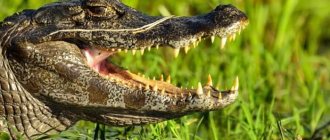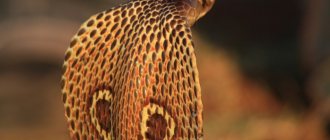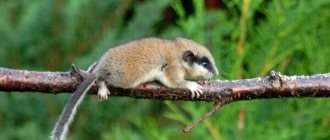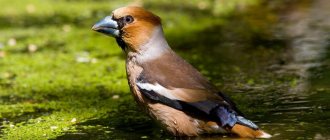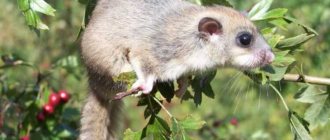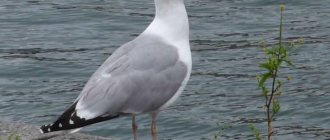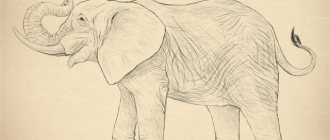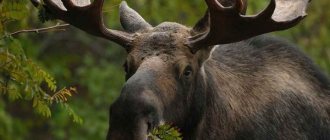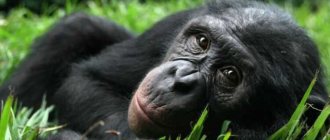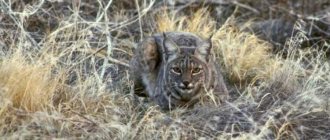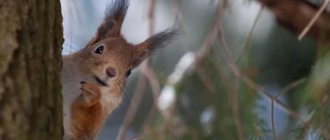The attitude towards reptiles everywhere and at all times was not at all positive. Even in fairy tales this is clearly reflected: “The mother did not fall in love with this Scarapea. He doesn’t invite you to dinner, they don’t call you by your patronymic, they don’t ask you your name, but the snake comes out to sit on the porch, and Vankin’s queen will step on its tail every time.” And in real life, worse things usually happened: when a person sees a reptile nearby, he will certainly kill it. All such actions took place contrary to nature, its subtlest mechanism was completely ignored. Until relatively recently, the conservation and protection of reptiles was not given the attention they deserved. It would seem easy to answer the question about the need for reptiles in nature, like all other inhabitants of our planet.
The Red Book of Russia is trying to prevent all the consequences of the pressure of human civilization in relation to living nature. That is why the strictest scientific recommendations for the protection of endangered reptile species have emerged. The relationships with other components of life on Earth have been identified and cannot be doubted. If reptiles disappear, the rest of the world will also be shaken: plants, animals, microorganisms. Everything moves and develops interconnectedly. And reptiles are exactly the same children of the Sun as our beloved cats. Reptiles not only serve as food for many groups of animals, including birds. Snakes, turtles, crocodiles are even eaten by people. And scaly ones simplify the development of agriculture: snakes eat rodents, lizards eat harmful insects. Turtles have always been a human resource; they provided him with eggs, fat, and meat. Even on farms they are bred en masse. Turtle shell and crocodile skin are expensive items and clothing. That is why crocodiles have come to the brink of extinction and are protected by the state in many countries.
No one argues that many species of reptiles are extremely dangerous for human life and health, but this does not mean that they need to be exterminated. You just need to be careful not to step on snakes in the forest. And they themselves never attack humans. Snakes are extremely useful and necessary. They are even specially caught and kept in captivity in order to take away their healing poison. When conventional reptile conservation efforts do not help enough, endangered reptiles are bred in captivity and released into the wild for greater success. This prevented the extinction of some species of sea turtles. The protection of reptiles is necessary. It is necessary to constantly conduct explanatory work among the population so that people behave loyally when meeting the same snakes. You just need to retreat and not kill an innocent creature.
Western boa (Eryx jaculus)
It grows up to 87 cm. It has a dense build and a very short tail with a blunt end. The diet is dominated by lizards, roundheads, rodents, and large insects. There are small vestigial hind legs. Can be found on the territory of the Balkan Peninsula, Southern Kalmykia, Eastern Turkey.
The photo shows a western boa snake
Conservation status by region:
- Arhangelsk region
- Belgorod region
- Kaluga region
- Kursk region
- Lipetsk region
- Moscow region
- Murmansk region
- Nizhny Novgorod Region
- Omsk region
- The Republic of Buryatia
- The Republic of Mordovia
- The Republic of Sakha (Yakutia)
- Republic of Tatarstan
- Saint Petersburg
- Tambov Region
- Tula region
- Yamalo-Nenets Autonomous Okrug
Japanese Snake (Euprepiophis conspicillata)
It can reach 80 cm, of which the tail accounts for almost 16 cm. It is distinguished by a round pupil. The diet is dominated by rodents, small birds and their eggs. It lives on the territory of the Kuril Nature Reserve (Kunashir Island), as well as in Japan in the Hokkaido and Honshu region. Little studied.
Japanese snake
Rattlesnake
Santa Catalina is an island inhabited by a rattlesnake that does not have a rattle. This advantage allows the small, slender snake to sneak up on its prey unnoticed.
Due to killings and illegal collection, as well as hunting of wild cats, their numbers began to decline. The rattlesnake is also threatened with extinction due to a decrease in the amount of the snake's food, the staghorn hamster.
Let's hope that the created program to reduce the number of cats on Santa Catalina Island will help preserve the rare species.
Aesculapian snake (Zamenis longissimus)
Also found under the name Aesculapian snake. The maximum recorded length is 2.3 m. This exceptionally aggressive snake, listed in the Red Book , can be gray-cream, yellowish-brown or dirty olive.
The species is known for regularly producing albinos. The diet consists mainly of chicks, rodents, shrews, small songbirds and their eggs. The digestion process can take up to four days. Inhabits the territory of: Georgia, the southern parts of Moldova, Krasnodar Territory to Adygea, Azerbaijan.
In the photo there is an Aesculapian snake
Description of the viper
Torso. The common viper usually has a body length of 60 - 80 cm. Large snakes more than 1 meter long and weighing about 500 g are less common. There are more such large vipers in the north than in the south. More often their body length is about 75 cm. Males are smaller than females. They weigh only 150 - 200 g. The color of the body can be very different. These are all kinds of shades of brown, brown, orange, yellow, purple, blue, green, pink and even red. Gray and brown vipers with a zigzag stripe along the back are more common. Males are more modestly colored than females.
The black stripe that runs along the back of the viper is the “calling card” of the snake. Usually it is zigzag-shaped, less often - with aligned edges, and even more rarely - with small transverse stripes.
It is worth mentioning the pure black coloration of the body of the common viper. Males are usually identified by small white spots on the upper lips and a white (or yellowish) coloration on the underside of the tail. The spots of black females are pink or reddish. Snakes with black skin coloration may have a bright orange zigzag pattern. Or be purely black.
“Burnt” snakes have the rarest skin color. Often such vipers are colored asymmetrically. For example, one half of the body (left or right) is colored, variegated, and the other is black.
An interesting description of the color of a viper is given by a famous snake catcher:
In Belarus, we came across vipers of eight color options: 1. Light gray snakes with a sharp black zigzag pattern on the back; 2. Dark gray snakes with a pattern marked by light stripes; 3. Brown snakes with black patterns; 4. Brown snakes with red pattern; 5. Cherry red snakes with brown pattern; 6. Red snakes with a pale red pattern; 7. Brown snakes are a solid tone, no pattern; 8. Black snakes without a single bright spot. The pattern on the back of snakes also had several variations: the most common were snakes with a characteristic zigzag, sharply outlined pattern, but we also caught snakes with an even dark stripe along the ridge, without any hint of a zigzag. There were also specimens in which, instead of a zigzag, the pattern was in the form of individual spots or narrow dashes (A.D. Nedyalkov “Naturalist in Search”).
Head. You can notice a narrowing and compression on the sides between the head and body of the viper. A distinct "X"-like pattern often adorns the snake's head, which is fairly flat (at the back) and rounded (at the front). The pupils of the eyes are slit-shaped. In bright sunlight, the oblique longitudinal slit contracts into one line, and in the dark it expands.
Non-venomous snakes, for example, snakes, snakes and some others, see well during the day and quickly chase frogs on land, and catch fish in the water. Our poisonous snakes: common vipers, copperheads, vipers and others, whose eyes are distinguished by slit-like rather than round pupils, hunt not during the day, but at night. During the day, they bask in the sun and seem lazy and apathetic. Two black vipers lived on my pulpit in a glass terrarium on the second floor window. One summer I noticed that both vipers were interested in something; they stood up and looked out the window, slowly turning their heads. Taking a closer look, I saw a cat sneaking through the sun in the grass 100 meters from our building. The cat stood out from time to time against the background of greenery with white spots. The snakes watched her for a long time, and when she disappeared from sight, the vipers tried to look where the cat had gone. I was quite surprised at how far these nocturnal snakes were seen during the day (P.A. Manteuffel, “Notes of a Naturalist”).
A pair of teeth (about 4 mm high) that conduct poison are located on the upper jaw of the snake, more precisely, in its front part.
Tossed to the side with a stick, she opened her mouth and bit the stick, down which droplets of poison flowed from two large, mobile, empty front teeth (P.A. Manteuffel, “Notes of a Naturalist”).
Baby snakes. The eggs from which tiny snakes hatch remain on the mother’s body until the process of forming full-fledged offspring is completed. The embryos (there are from 5 to 12 pieces, less often - up to 20 pieces) feed on egg yolk and snake blood. The laid eggs immediately “come to life”: the baby snakes (brownish with a dark brown zigzag, 16.5 cm long) quickly free themselves from their shells and crawl away in different directions. They still have to grow, changing and shedding skin that is no longer needed, or “creeps.” During the first year of their life, outfit changes occur up to 7 times. By the age of three, vipers become sexually mature.
Vipers live a long time, 15 years. Some authors indicate their lifespan at 20 years, and the age of “survival” - 10 - 12 years. Old snakes are the longest, as the snake's body continues to grow throughout its life.
The disturbed viper hisses. She instantly falls into a state of rage and attacks even stationary objects: branches, sticks, glass, etc.
Transcaucasian snake (Zamenis hohenackeri)
Grows up to 95 cm. The pupil is round. It feeds like a boa constrictor, squeezing chicks or lizards in rings. In addition, it climbs trees quite willingly. The opportunity to lay eggs occurs after the third year of life. It lives in Chechnya, Armenia, Georgia, North Ossetia, the northern parts of Iran and Asia Minor.
Transcaucasian snake snake
Slender-tailed climbing snake (Orthriophis taeniurus)
Another species of colubrid non-venomous snake in the Red Book . Reaches 195 cm. Prefers rodents and birds. There are several subspecies of snakes, one of which, due to its peaceful nature and beautiful colors, can often be found in private terrariums. Lives in the Primorsky Territory. Regularly found in Korea, Japan, and China.
Slender-tailed climbing snake
Toxicity and danger to humans
Like all species of the genus of true vipers, the bite of the Dinnik viper poses a certain danger to humans and animals. Snake bites are most dangerous in late summer and autumn - at this time, the concentration of toxins in their venom is maximum.
Encounters with this species can occur in the viper’s habitats, during hiking trips, and expeditions. Often those who are bitten are local residents - shepherds tending flocks of sheep in the highlands. However, it is worth noting that the viper never attacks first and always avoids meeting a person.
When disturbed, the snake tries to quickly crawl away and hide. A bite can be provoked by an attempt to catch a snake, and even in this case, the viper will hiss in warning and make “idle” lunges, since the poison is very valuable for it and a lot of the body’s resources are spent on its production.
In another case, a bite can occur if you accidentally step on a viper. Particularly dangerous is the fact that in these areas there are often no medical institutions that could provide assistance to a victim of a poisonous bite.
As mentioned above, the venom of the Dinnik viper is hemolytic. It contains high-molecular proteases with hemorrhagic, hemocoagulating and necrotizing effects, peptide hydrolases, hyaluronidases and phospholipases, which at the time of the bite enter the circulatory system through the lymph nodes, destroying red blood cells - erythrocytes and having a necrotic effect on the hematopoietic organs, for example, the spleen, and also lymph nodes.
Usually, after a bite, a person feels a sharp burning pain directly in the bitten area, then, within 15 - 30 minutes, dizziness, nausea, vomiting, diarrhea, pale skin, increased sweating, chills, and tachycardia are possible.
In particularly severe cases, loss of consciousness, swelling of the face, a significant drop in blood pressure, heavy bleeding (DIC syndrome), renal failure, convulsive or comatose state may occur.
Mortality varies between 4-8%. In the vast majority of cases, the consequences of a bite last no more than a week, but can last for a longer period - up to one year.
In particular, improper self-treatment can lead to various kinds of complications.
Striped snake (Hierophis spinalis)
It can reach a length of 86 cm. It feeds on lizards. Very similar to the poisonous snake living in the same habitat. The key difference is that the harmless snake has a light stripe that runs from the top of its head to the tip of its tail. It lives in the southern part of Kazakhstan, Mongolia and China. Cases of encounters near Khabarovsk are described.
Striped snake
First aid for a bite
As first aid for a bite, it is recommended to calm down, apply a pressure bandage (but not a tourniquet!), reduce the load on the limb to the point of immobilization, and provide plenty of fluids.
Opinions about the benefits of sucking poison from a wound are divided: some experts believe that with this procedure, up to 30-50% of all poison can be removed within 10-15 minutes, others consider it harmful, since bacterial flora can enter the blood along with saliva, causing purulent inflammation and leading to more serious consequences, including sepsis.
Incorrect and erroneous, but still common (especially among the local population) methods of treatment include making transverse incisions at the site of the bite, cauterizing, applying a tourniquet, and covering with snow.
The only reliable medical remedy that can neutralize the effect of poison toxins is a special serum - “Anti-viper”, which is strongly recommended to have with you during trips to the habitats of this type of viper.
Red-banded Dinodon (Dinodon rufozonatum)
The maximum recorded length is 170 cm. It feeds on other snakes, birds, lizards, frogs, and fish. This mobile, beautiful snake, listed in the Red Book of Russia, lives in Korea, Laos, eastern China, on the islands of Tsushima and Taiwan. It was first caught in our country in 1989. Little studied.
Snake red belted dinodon
Number of gharial crocodiles
There is no specific data on the population size of these crocodiles, but these predators are disappearing everywhere. The main reasons for the degradation of gharial crocodiles is overly active fishing.
People hunt these predators for their valuable skin. Also a huge threat is the destruction of crocodile habitats, which occurs due to cutting forests and cultivating rice fields.
The elongated muzzle is a consequence of food specialization: the main food of the gharial crocodile is fish.
In some places, for example in Indonesia, young individuals are caught from the wild to raise them on farms, which also causes huge damage to the population.
The population of gharial crocodiles in the area of southern Kalimantan and eastern Sumatra is believed to be in a fairly good situation.
The gharial crocodile is protected by law in Indonesia and Malaysia, but conservation measures are not well controlled. The most favorable situation is observed in protected areas: Pa-dang-Luwai Nature Reserve, Taman Negara National Park and Berbach Nature Reserve.
A more thorough study of the population on the little-studied Indonesian islands is needed. Today there are breeding programs for gharial crocodiles in India, at the Madras Snake Park, at the New York Zoological Park and in Malaysia at a farm in the state of Sarawak.
Gharial crocodiles are protected by law in Indonesia and Malaysia.
Eastern Dinodon (Dinodon orientale)
Reaches one meter. Feeds at night on mice, lizards, and chicks. It lives in Japan, where it is called the illusory snake for its timidity and twilight lifestyle. Its existence on Russian territory (Shikotan Island) is questionable - the meeting was described a long time ago. It is possible that this snake already belongs to an extinct species.
Pictured is an eastern dinodon
Interesting Facts
- The Dinnika viper is capable of not only inflicting poisonous bites with its teeth, but also pulling out prey killed by it and stuck between stones or other objects. This behavior is generally not characteristic of snakes, especially poisonous ones, due to the usually insufficient jaw strength and fragility of the teeth.
- Of all the species of poisonous snakes of the Greater Caucasus, the Dinnika viper is the highest mountain species - the most extreme points of discovery of this snake are over 1500 meters above sea level. Not a single species of poisonous snake rises higher than this species in the Greater Caucasus.
- This type of viper is sometimes kept in terrariums, mainly in specialized serpentariums and zoo collections, however, amateur terrariumists sometimes keep this species. It should be noted that due to the high toxicity of the venom of this snake, keeping it in an amateur terrarium poses a particular danger to both the owner and others!
Cat snake (Telescopus fallax)
Can reach a length of one meter. It feeds on rodents, birds, and lizards. It lives in Dagestan, Georgia, and Armenia, where it is better known as the house snake. It is also found in Syria, Bosnia and Herzegovina, Israel, and the Balkan Peninsula.
The cat snake easily climbs steep rocks, trees, bush branches and walls. She clings to the slightest irregularities with the curves of her body, thereby holding herself on steep areas, perhaps this is where her name came from.
Pictured is a cat snake
Lizard in human life
Lizards do not harm people. Newborn lizards actively eat harmful insects. The fast reptile is very voracious; by destroying pests in country houses or in agriculture, it benefits people. However, it also causes harm while in the areas.
Since in their natural habitat reptiles themselves are food for many individuals, moles show great interest in them. The presence of moles on the site threatens to eat vegetables and dig numerous holes.
Reptiles also eat not only harmful insects, but also earthworms, which can improve the composition and structure of the soil and saturate it with air.
Dinnika's viper (Vipera dinniki)
Dangerous for humans. Reaches 55 cm. Color is brown, lemon yellow, light orange, gray-green, with a brown or black zigzag stripe.
The species is interesting due to the presence of complete melanists, which are born with normal coloring, and become velvety black only by the third year. It feeds on small rodents and lizards. It lives in Azerbaijan, Georgia, Ingushetia, and Chechnya, where it is considered one of the most poisonous.
Pictured is Dinnika's viper
Reproduction
Dinnik's vipers breed in the spring, immediately after the end of hibernation. Pairs are formed only during the breeding season. Before mating, a special ritual of “snake dances” takes place. Mating itself lasts up to several hours and usually occurs in April - May.
Like all species of the genus true vipers, Dinnik vipers are characterized by ovoviviparity. Between mid-August and the end of September, the female gives birth to up to ten fully formed cubs, the length of which can reach up to 27 cm and weight up to 4 grams.
Immediately after birth, the cubs crawl away and already at this age have a fairly strong poison.
If the birth occurs quite late and cold weather is already setting in, then the babies do not feed until spring, going into hibernation. Under more favorable conditions, baby snakes begin to feed after the first molt.
The diet of babies is not very diverse - various locusts and small lizards are the basis of their menu for the first time. Baby snakes grow relatively quickly and by the second year of life they almost reach the length of adult snakes.
Dinnik's vipers reach sexual maturity at the age of two and a half to three years, while males become sexually mature earlier than females.
Kaznakov's viper (Vipera kaznakovi)
The second name of the viper is Caucasian. Dangerous for humans. One of the most beautiful vipers in Russia. Females reach 60 cm in length, males - 48 cm. The diet includes birds and small rodents. Found in the Krasnodar Territory, Abkhazia, Georgia, and Turkey.
Viper Kaznakova (Caucasian viper)
Nikolsky's viper (Vipera nikolskii)
Forest-steppe or Black adder. Dangerous for humans. Can reach 78 cm in length. The menu consists of frogs, lizards, and sometimes fish or carrion. Inhabits forest areas throughout the European part of the Russian Federation. Encounters in the foothills of the Middle Urals are described.
Nikolsky's viper (Black viper)
Features of the appearance of gharial crocodiles
Gharial crocodiles are relatively large, reaching approximately 5 meters in length, but the average size of adults ranges from 3.5-4 meters.
Gharial crocodile (Tomistoma schlegelii).
The gharial crocodile differs from other crocodiles by its narrow and very long snout. Such a long snout allows crocodiles to deftly grab slippery fish. The length of the muzzle exceeds the width of the base by approximately 4.5 times. In the upper jaw there are 20 teeth of almost the same size, they are sharp and thin. Gharial crocodiles live in fresh lakes, rivers and swamps. They feed mainly on fish.
Levant viper (Macrovipera lebetina)
The Levant viper is the second name for the viper. Extremely dangerous for humans. There are known specimens with a maximum length of 2 m and a weight of up to 3 kg. The color depends on the habitat and can be either dark monochromatic or grayish-brown, with a complex pattern of small markings, sometimes with a purple tint.
It feeds on birds, rodents, snakes, and lizards. The diet of adults includes small hares and small turtles. Inhabits the territories of: Israel, Turkey, Afghanistan, India, Pakistan, Syria, Central Asia.
In Kazakhstan it is practically exterminated. Due to its endurance and unpretentiousness, it was used more often than other species in snake nurseries for milking. The unique venom of the viper helped in the creation of a cure for hemophilia.
Viper is very poisonous and dangerous to humans
The names and descriptions of snakes listed in the Red Book of Russia are worth studying not only in a biology lesson. Indeed, despite the fact that some of them are poisonous, the rest are destroyed only because they look like vipers.
Snakes of the Red Book of Russia
Surely, each of us knows what the Red Book is. It is very significant for humanity. Flipping through its pages, we receive complete information about rare animals, birds, and reptiles that need help and support. Because they are already on the verge of extinction. And every year there are more and more endangered species.
There are many volunteer and zoological organizations that want and can help them. But a lot depends on us. As far as we are aware, at least about those endangered species living in our territories.
Let's say, having met a snake, many of us will freeze in a daze. And the first thing that comes to mind is how to kill her. And so, our ignorance makes itself felt. After all, not all of them are poisonous. And those who have poison are not all aggressive.
By following certain rules of behavior, you can easily avoid conflict with a reptile. That's why everyone should have knowledge about which snakes, their names and descriptions, are listed in the Red Book .
Western boa snake
Western boas grow to medium sizes, eight to ten centimeters. Belongs to the pseudopod family. The body of the boa is well-fed, and the tail is almost invisible. Since it is short and blunt at the end.
It feeds on lizards, rats and mice, and various insects. Its habitat is the eastern parts of the Ciscaucasia, Altai, and Caspian steppes. Also on the Balkan Peninsula, the lands of Turkey.
Pictured is a Japanese snake
Japanese snake, this snake was first discovered in Japan, it has not yet been fully studied. He loves warm climates very much, and prefers to be near streams, not far from volcanoes.
That's why it lives on the Kuril and Japanese islands. It grows to a length of just over seventy centimeters. Of these, sixteen are in the tail. He has a noticeably prominent pupil, round in shape.
The snake is dark brown in color, but its offspring are much lighter. This snake preys on chicks, bird eggs and rodents. Having caught prey, it squeezes its victim with its body muscles.
Aesculapian snake
Aesculapian snake, also called Aesculapian snake. It is of impressive size, up to two and a half meters long. Its body is brown-olive in color. But in their form, albino snakes with red eyes are often born.
Its diet includes mice and rats. He often crawls through trees and destroys bird nests. When going out to hunt, the Aesculapian snake eats for future use, and then the food is digested in its esophagus for almost a week.
By its nature, it is quite an aggressive individual. During the mating period, the male and female perform mating dances, entwining the back parts of their bodies and lifting the front parts.
It was this snake that became the prototype of the medical emblem. And also, this snake is listed in the Red Book. It can be found in Abkhazia, in the south of Moldova, in the Krasnodar region.
Transcaucasian snake
The Transcaucasian snake is a light-colored reptile, one meter long. Its habitat is mountains and rocks, gardens and vineyards. He is able to climb mountains to a height of two kilometers.
He spends his day searching for food. Having caught a bird, and this is his favorite delicacy, he squeezes it tightly, then swallows it. At the sight of predatory enemies, it hides in a rock crevice, under a stone or in a hollow tree. The snake lives in parts of Asia, Iran and the Caucasus. In the south of Turkey, Lebanon. In the northern region of Israel.
The slender-tailed climbing snake belongs to the snake family and is therefore not poisonous. It is almost two meters long, with a short tail. The snake is beautiful with its golden-olive hue.
Found in mountains and forests. On the edges of the tall grass. A frequent visitor to people's gardens. It is also kept in home terrariums. It feeds on small chicks and mice. Rats are too much for him anymore.
It has not been seen on the territory of our country for quite a long time, so this snake is also listed in the Red Book. Currently lives in the southern and eastern parts of the Asian continent.
The striped snake is very similar to one of the poisonous snakes. The only difference is a long white or yellow stripe along the entire body. It is not large in size, 70-80 cm in length.
Striped snake
It lives in dense thickets of bushes, on mountain slopes and river banks. It is often found near rodent burrows. Where it lies in wait for prey, there it hides from predators. Lives in Kazakhstan. As well as Chinese, Mongolian and Korean lands. Several of its specimens have been seen in Russia and the Far East.
The red-belted dinodon is a snake, one and a half meters long. It is predominantly coral in color. Lives in forests, on the banks of rivers and lakes. Goes hunting at night. His diet is quite varied.
Red-banded Dinodon
It includes all rodents, lizards and frogs, birds and reptiles. If it is attacked, then in defense, the snake will release a fetid cloud from the anus.
It was first discovered in our country in the late nineties of the last century. At the moment, the snake is listed in the Red Book of Russia. You can see it here in Kuban. On the lands of Japan, Korea and Vietnam.
The eastern dinodon belongs to the snake family. Small in size with an average length of sixty centimeters. Its head is black, the color of the whole body is dominated by brown tones.
Eastern Dinodon
Prefers to live near watery, densely overgrown shores. He hunts mainly at night. It feeds on small fish and invertebrates. Since the eastern dinodon is timid, when running away from an enemy, it can penetrate into the narrowest crevices and even burrow into the ground.
Well, if he is suddenly caught by surprise, he will actively defend himself, hissing, bending aggressively. He will even try to bite, although there is no poison in him at all. It can be found exclusively on the Japanese islands. In Russia it was spotted in the Kuril Nature Reserve.
The cat snake is a medium-sized reptile, one meter long. She has an oval head, and her body is slightly flattened on the sides. She is a creature of the night. And on a hot day, he will lie down under stones or tree bark.
cat snake
She has the unusual ability to crawl vertically. The snake can easily climb any tree and bush. It will cling tightly to a branch, like a cat. It feeds on mice, lizards, and chicks.
It belongs to an endangered species, and even people, confusing it with a viper, destroy it en masse. In Russia, found only in Dagestan. And so, its habitat is very large: the islands of the Aegean and Mediterranean seas. On the soil of Bosnia and Herzegovina. Jordan, Iran, Iraq, Syria, Lebanon are her places of residence. Türkiye and Abkhazia.
Dinnika's viper is the most attractive of all vipers. Female vipers are larger than their males. On average, its length is half a meter. Thanks to its camouflage color, it is perfectly camouflaged among stones, grass and foliage.
Dinnika's Viper
Its menu includes lizards, voles and shrews. The viper hunts in the morning and evening. Because it does not like the heat of the sun, hiding from it in stones and animal burrows.
Seeing its prey, the viper instantly attacks it with its poisonous teeth. Then, smelling it, he finds it and eats it. Lives in the Caucasus, Georgia and Azerbaijan. In Chechnya and Dagestan. There it is considered the most poisonous.
Kaznakova's viper is a rare and dangerous species of viper. It is also called the Caucasian viper. They grow small in size, females are a little over half a meter, males are smaller. The diet, like most snakes, is rodents, lizards, frogs. In Russia it lives in the Krasnodar region. Also in Turkish, Abkhazian, Georgian countries.
Viper Kaznakova
Nikolsky's viper, also known as the forest-steppe and black viper. Very poisonous and extremely dangerous to humans. Male vipers are fifty centimeters long, females are large. They feed on lizards, frogs, and fish. They live in the Urals, Saratov and Samara regions. They also occupy the European part of Russia.
Nikolsky's viper
The viper or Levant viper is a very dangerous species for people. A two-meter individual weighs three kilograms. It differs from other snakes in the presence of supraorbital scales. Its color changes depending on the place where it lives.
Lives in the hills, on slopes, in dense bushes, in valleys, on river banks. A frequent visitor to the outskirts of towns and villages. Since she is fearless in front of people, she can easily crawl into a person’s home.
Levant viper
They hunt geckos and lizards, mice, jerboas and hamsters. She also likes hares and small turtles. It inhabits Africa, Asia, and the Mediterranean. Arabian, Indian and Pakistani territories. You can also see it in Turkey, Iran, Iraq, Afghanistan.
